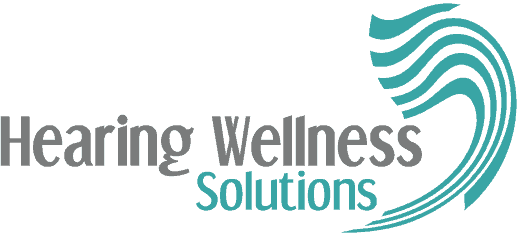Hearing is a precious sense that enriches our lives by allowing us to communicate, enjoy music, and experience the world around us. Yet, many people take their hearing for granted until it begins to fade. As an audiologist, I’m here to shed light on the fascinating and often overlooked relationship between exercise and hearing health. In this article, we will explore the latest advancements in hearing loss prevention, diagnosis, and management, backed by research and a forward-looking perspective. By understanding the profound impact exercise can have on our ears, we can better appreciate the importance of early detection and make informed choices to protect our auditory well-being.
The Link Between Exercise and Hearing Health
Recent studies have uncovered a strong connection between regular physical activity and hearing health. While hearing loss can result from various factors, including genetics, aging, and exposure to loud noise, exercise offers a remarkable way to mitigate some of these risks. Let’s delve into the ways exercise benefits our ears:
Enhanced Blood Flow:
Exercise promotes healthy circulation, which is crucial for delivering oxygen and nutrients to the delicate hair cells in the inner ear. These hair cells are responsible for transmitting sound signals to the brain. Improved blood flow helps maintain their vitality, reducing the risk of hearing loss.
Reduced Risk of Chronic Conditions:
Regular exercise has been shown to reduce the risk of chronic conditions such as cardiovascular disease and diabetes. Both conditions are associated with an increased risk of hearing loss. By addressing these risk factors, exercise contributes to better hearing health.
Stress Reduction:
Stress is a known contributor to hearing problems. Exercise releases endorphins, which alleviate stress and promote a sense of well-being. Lower stress levels can protect your hearing by reducing the risk of conditions like tinnitus and noise-induced hearing loss.
Maintenance of a Healthy Weight:
Obesity is linked to hearing loss, as excess body fat can negatively affect blood flow and the overall health of the inner ear. Exercise helps individuals maintain a healthy weight, which in turn supports hearing health.
Prevention of Age-Related Hearing Loss:
Age-related hearing loss, known as presbycusis, is a common issue as we get older. Regular exercise can delay the onset of age-related hearing loss, preserving our auditory abilities well into our golden years.
The Latest Advancements in Hearing Loss Prevention, Diagnosis, and Management
Early Detection:
Early detection is crucial in preserving hearing health. Audiologists now employ advanced diagnostic techniques, such as otoacoustic emissions (OAE) and auditory brainstem response (ABR) tests, to identify hearing issues in their infancy. Routine hearing screenings are recommended, especially for those at higher risk, such as individuals with a family history of hearing loss or noisy workplace exposure.
Personalized Hearing Solutions:
The field of hearing aids has seen remarkable advancements. Modern hearing aids are sleek, discreet, and equipped with cutting-edge technology. They can be tailored to the individual’s hearing profile, offering a highly personalized listening experience. Features like Bluetooth connectivity and noise-canceling capabilities make these devices invaluable in various environments.
Cochlear Implants:
For individuals with severe to profound hearing loss, cochlear implants have revolutionized their hearing experience. These devices directly stimulate the auditory nerve, bypassing damaged hair cells in the inner ear. Ongoing research seeks to make cochlear implants even more effective and accessible to a broader population.
Noise Protection Technology:
Noise-induced hearing loss remains a prevalent concern. Innovations in noise protection technology, such as custom-fit earplugs and noise-canceling headphones, help individuals safeguard their hearing in noisy environments. These tools are essential for professionals working in loud industries and music enthusiasts attending concerts.
The Future of Hearing Health
As we look ahead, the future of hearing health is promising. Researchers are exploring innovative interventions to further improve our auditory well-being:
Genetic Therapies:
Emerging gene-editing techniques hold the potential to address genetic factors contributing to hearing loss. While these therapies are in their early stages, they offer hope for individuals with hereditary hearing conditions.
Regenerative Medicine:
Scientists are investigating regenerative approaches to restore damaged hair cells in the inner ear. Stem cell therapies and gene therapies are at the forefront of this exciting field, offering the possibility of hearing restoration in the future.
AI-Enhanced Hearing Solutions:
Artificial intelligence (AI) is being integrated into hearing aids and cochlear implants to provide real-time sound processing and adaptive adjustments. These AI-powered devices offer users a more natural and adaptive hearing experience.
Conclusion
Hearing health is an essential aspect of our overall well-being, and exercise plays a significant role in its preservation. Regular physical activity can enhance blood flow, reduce stress, and mitigate the risk factors associated with hearing loss. In addition to exercise, the latest advancements in hearing loss prevention, diagnosis, and management offer hope to those with hearing difficulties.
Early detection remains pivotal in addressing hearing issues promptly and effectively. As technology continues to advance, personalized solutions and futuristic interventions hold the promise of improving the lives of individuals with hearing loss.
To safeguard your hearing, I encourage you to embrace an active lifestyle, prioritize routine hearing screenings, and stay informed about the latest developments in hearing health. By doing so, you can enjoy the beautiful sounds of life for years to come.


